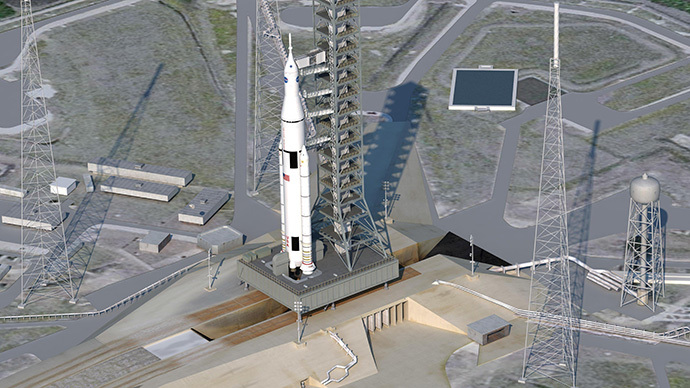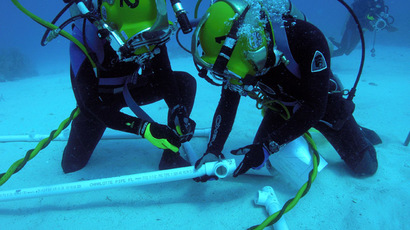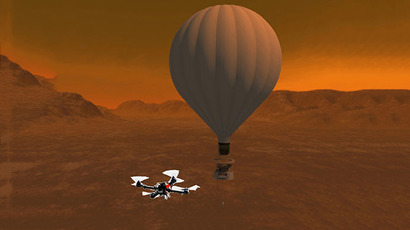NASA's most powerful rocket ever aims for deep space exploration

As NASA continues to plan for future asteroid-capturing missions and excursions to Mars, the space agency has approved the development of what’s being billed as the most powerful rocket ever.
Researchers and engineers at NASA and Boeing have been pouring over the design of the new Space Launch System for years now, but on Wednesday it was announced that the two had reached a $2.8 billion agreement that will have the rocket ready for its first take-off in 2017.
If successful, the first version of the Space Launch System (SLS) will stand 321 feet tall and be able to lift 154,000 pounds into low-Earth orbit, with a second, 384-foot version capable of lifting 286,000 pounds, including a capsule-shaped Orion spacecraft with astronauts inside. The second flight is expected to take place in 2021.
According to the Los Angeles Times, Boeing expects the SLS to be capable of performing numerous undertakings, including missions to the moon and Mars.
"We're ready to move forward," Frank McCall, Boeing’s Space Launch System deputy program manager, told the newspaper. "This program has the potential to be inspiring for generations."
The contract was just recently finalized, after NASA and Boeing finished critical testing of the rocket’s new booster. The SLS will be powered into space by four hydrogen-fueled engines and two solid-fuel boosters capable of generating a total thrust of 8.4 million pounds at liftoff.
"The SLS program team completed the core stage critical design review ahead of schedule and continues to make excellent progress towards delivering the rocket to the launch pad," Todd May, NASA's SLS program manager, said in a statement to CBS News. "Our entire prime contractor and government team has been working full-steam on this program since its inception."
Design work on the SLS first began back in 2010, when the Obama administration cancelled NASA’s original goal of returning to the moon via the Constellation program and a new rocket called Ares V. When those plans were scrapped, the SLS was formed by combining some elements of the Ares design with modified Space Shuttle parts.
Despite the finalization of this recent contract, supporters of the SLS still have to contend with questions from critics and lawmakers, some of whom have questioned NASA’s long-term goals. By modifying and retrofitting Space Shuttle boosters, for example, the SLS has come under fire from some corners as a “Frankenstein rocket.”
Speaking with the LA Times, the advocacy group Space Frontier Foundation declared that SLS was being "built from rotting remnants of left over congressional pork. And its budgetary footprints will stamp out all the missions it is supposed to carry, kill our astronaut program and destroy science and technology projects throughout NASA."
Other groups, like the Planetary Society in Pasadena, have come out in support of the program believing that its multi-purpose design will allow NASA to undergo a variety of missions.
When NASA first unveiled the SLS back in 2011, the agency’s Bill Gerstenmaier also dismissed the idea that its design was flawed.
"It's not fair to say this is really a rocket built from shuttle parts," he said, as quoted by Space.com. "This is really these components used in a new and novel way. It's difficult to compare rockets from one generation to the other."
If NASA can successfully adapt the SLS to help it reach Mars, it’ll go a long way towards reaching some of the goals recently outlined by the agency’s top scientist. As RT reported in June, Dr. Ellen Stofan confirmed that colonizing the Red Planet is an important part of NASA’s agenda, suggesting that the search for extraterrestrial life would be greatly aided by the ability to explore Mars with humans on the ground.
Shortly before that, NASA scientists also unveiled plans to explore Saturn’s moon Titan with a quadcopter drone.The aircraft would be capable of flying over Titan’s landscape and hydrocarbon seas, collect samples, and deliver them to a nuclear-powered “mothership” – either a balloon or lander –where it can recharge for extra flights.














